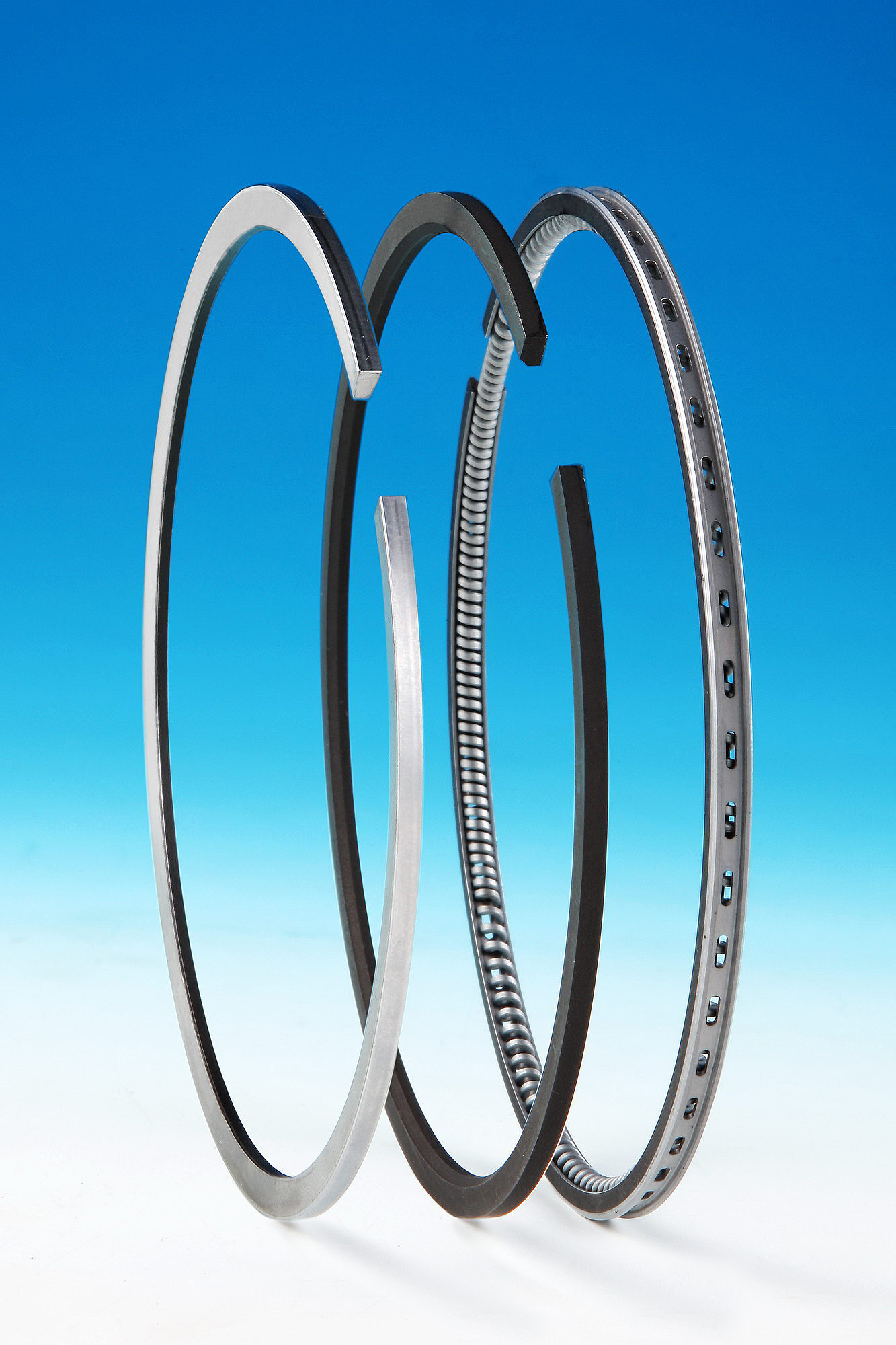Everything About Piston Ring Types, Their Functions and Material Used
Manufacturers design piston rings to meet specific functionality and usability requirements. Consequently, pistons vary in their purpose and can be categorized into three main types. The primary role of a piston is to seal the combustion chamber in both 2-stroke and 4-stroke engines.
Piston rings are an essential part of the piston assembly. Their quantity and function are influenced by the type and capacity of the engine.
For example, a 2-stroke engine typically features two piston rings, one for compression and a second for scraping. In contrast, a 4-stroke engine is equipped with three piston rings, where the additional ring serves as an oil scraper.

What Is a Piston Ring?
Piston rings are metallic split rings fitted into the grooves on the outer diameter of a piston, crucial for ensuring a proper seal between the piston and the cylinder wall.
What are Piston Rings Made of?
Typically, piston rings are manufactured from fine-grained alloy cast iron, which could include alloys such as nickel, copper, vanadium, chromium, titanium, and molybdenum. The cast iron consists of graphite, enabling self-lubrication that minimizes friction between the cylinder liners and the rings. For optimal durability, the materials used in piston rings are designed to be more rigid than the cylinder liner itself. These alloys significantly enhance the strength of the cast iron.
Some Piston rings are also made from pressed steel.
Ring Coating
Piston rings are subjected to extreme conditions, which can lead to rapid wear. As a countermeasure, they are coated with various materials. Coatings made from softer substances like graphite, phosphate, and iron oxide are commonly used for their excellent oil-absorbing capabilities that improve lubrication.
These coatings also help prevent ring scuffing, a problem that arises from metal-to-metal contact at elevated temperatures, similar to welding. By eliminating exposed iron, coatings prevent the dramatic effects of scuffing.
Types of Piston Rings
There are two primary types of piston rings:
1. Compression Rings
Compression rings are generally found in sets of two or three on a piston, depending on the engine's compression ratio. In high-performance engines, the second and third rings are often taper-faced to avoid sticking. Counterbored and scraper designs are typically applied for the top and second compression rings. During the suction stroke, these rings may slightly twist due to the internal forces at play. As the piston moves upward during the compression stroke, they create a seal against the cylinder wall, effectively reducing oil consumption. In the power stroke, the combustion pressure straightens the rings, ensuring efficient sealing.
2. Oil Control Rings
In any engine, oil splashed onto the cylinder walls by the connecting rod must be effectively managed. Excess oil needs to be scraped off and returned to the oil pan to prevent burning in the combustion chamber, which may otherwise raise oil consumption levels. Efficient oil control rings are vital for cooling, cleaning, and maintaining an effective seal on the cylinder wall.
Oil control rings come in three primary types:
- **One Piece Slotted Cast Iron Type:** These rings feature slots that allow an expander spring to exert added pressure against the cylinder wall, enhancing scraping action.
- **One Piece Pressed Steel Type:** Found predominantly in engines with worn cylinder walls, these steel rings can seal one side of the groove.
- **Three Piece Steel Rail Type With Expander:** This design provides sealing in both upward and downward directions, ensuring an overall more effective seal.
Functions of Piston Rings
Piston rings perform four essential functions:
1. Sealing Combustion Gas
Piston rings ensure an airtight seal between the piston and the cylinder wall, preventing leakage of combustion gases during engine operation, thereby optimizing engine power and efficiency while minimizing fuel consumption and environmental impact.
2. Controlling Lubricating Oil
These rings regulate the quantity of oil that enters the combustion chamber, keeping a thin oil layer on the cylinder wall. This prevents oil from burning in the chamber and ensures adequate lubrication without oil infiltration.
3. Heat Dissipation
Piston rings assist in transferring heat away from the piston into the cylinder, thus managing the high temperatures that arise during the combustion process. Effective heat transfer is paramount in preventing engine overheating and potential damage.
4. Piston Alignment Support
By preventing the piston from making direct contact with the cylinder wall, piston rings facilitate smooth piston movement. This function reduces wear on components, ultimately extending the engine's lifespan.
Conclusion
In summary, piston rings can be divided into three main categories: compression rings and oil control rings. They serve multiple crucial functions, including sealing combustion gases, regulating lubrication, aiding in heat management, and preventing direct piston-to-wall contact, thereby maintaining the engine's efficiency and longevity.
Next
None
If you are interested in sending in a Guest Blogger Submission,welcome to write for us!



Comments
0